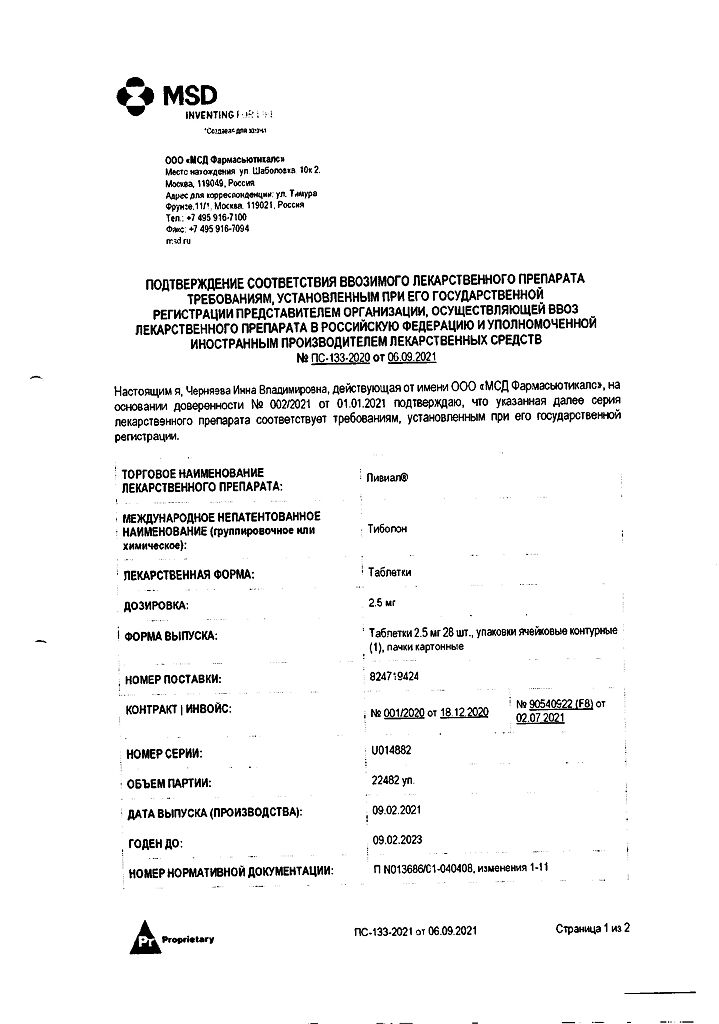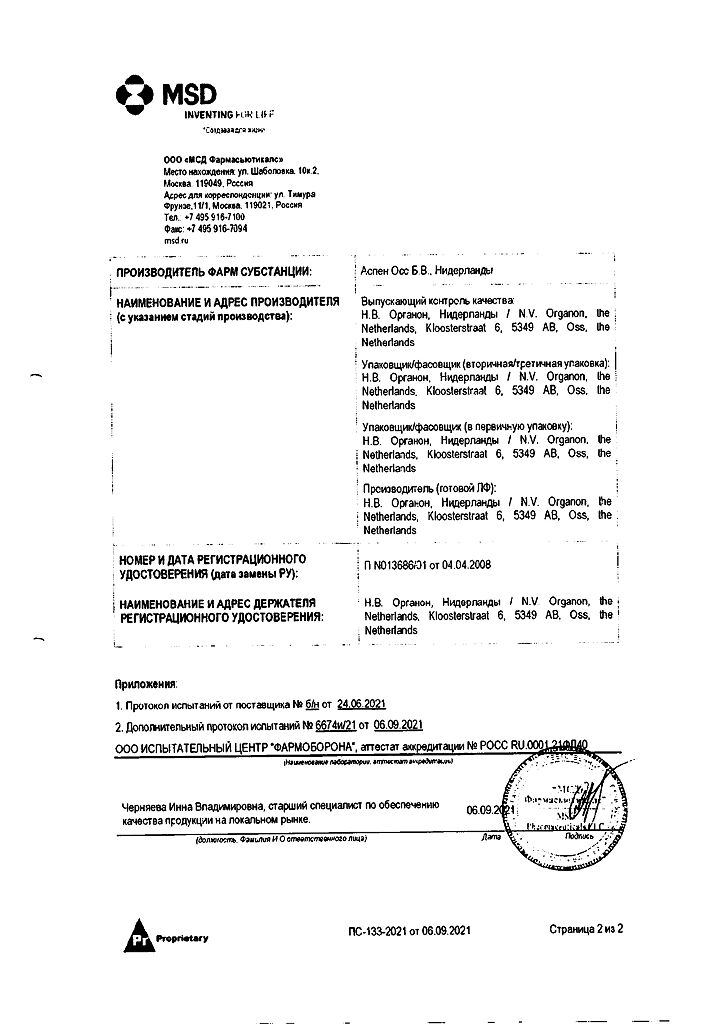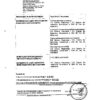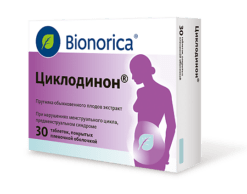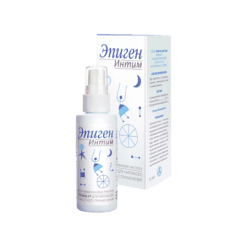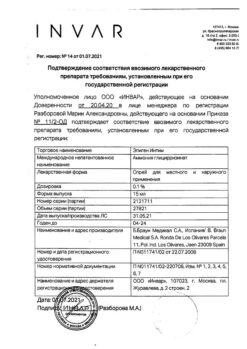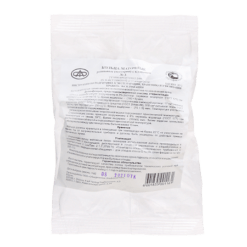No products in the cart.
Livial, tablets 2.5mg 28 pcs
€80.24 €66.87
Description
With the cessation of menstruation, both due to natural causes and after removal of the ovaries, the period of postmenopause begins, characterized by a significant decrease in the female sex hormones in the body, especially estrogens. In turn, estrogen deficiency causes postmenopausal (menopausal) symptoms such as hot flashes, night sweats, mood changes, depression, irritability, vaginal dryness and discomfort, decreased libido, etc.
A consequence of estrogen deficiency is the accelerated loss of bone tissue during postmenopause – osteoporosis develops, resulting in more frequent fractures. This affects the spine, femur, forearm and wrist bones to a greater extent. In addition, osteoporosis may also cause back pain, weight loss and curvature of the spine.
Livial belongs to a group of drugs used in so-called hormone replacement therapy (HRT) and is used to treat postmenopausal symptoms. If you are 60 or older, you should use Livial only if other OHT drugs are not available. Relief of symptoms usually begins after several weeks, but optimal results are achieved after three months of treatment.
If there is an increased risk of osteoporosis in postmenopause in cases when other osteoporosis drugs are not suitable for you, Livial can also be used.
Unlike other types of hormone replacement therapy, Livial has no stimulating effect on the endometrium. That is why treatment with Livial does not cause monthly bleeding from the vagina.
Indications
Indications
Treatment of symptoms of estrogen deficiency in postmenopausal women.
Prevention of osteoporosis in postmenopausal women at high risk of fractures and with intolerance to other groups of drugs used to prevent osteoporosis.
Pharmacological effect
Pharmacological effect
With the cessation of menstruation, either due to natural causes or after removal of the ovaries, the postmenopausal period begins, characterized by a significant decrease in female sex hormones in the body, primarily estrogens. In turn, estrogen deficiency causes the appearance of postmenopausal (menopausal) symptoms such as hot flashes, night sweats, mood changes, depression, irritability, vaginal dryness and discomfort, decreased libido, etc.
A consequence of estrogen deficiency is also accelerated loss of bone tissue during menopause – osteoporosis develops, which results in more frequent fractures. To a greater extent this applies to the spine, femur, bones of the forearm and wrist. Additionally, osteoporosis can also cause back pain, weight loss, and spinal curvature.
Livial belongs to a group of medicines used in so-called hormone replacement therapy (HRT) and is used to treat postmenopausal symptoms. If you are 60 years or older, Livial should be used only if it is impossible to use other drugs for HRT. Symptom relief usually begins within a few weeks, but optimal results are achieved after three months of treatment.
If the risk of developing osteoporosis increases during the postmenopausal period and in cases where other drugs for the treatment of osteoporosis are not suitable for you, it is also possible to use Livial.
Unlike other types of hormone replacement therapy, Livial does not have a stimulating effect on the endometrium. Therefore, treatment with Livial does not lead to monthly bleeding from the vagina.
Special instructions
Special instructions
Livial is not intended for use as a contraceptive and does not protect against unwanted pregnancy.
The decision to start taking Livial should be based on an assessment of the benefit/risk ratio, taking into account all individual risk factors, and in women over 60 years of age, the increased risk of stroke should also be taken into account.
For the treatment of postmenopausal symptoms, Livial should be prescribed only for symptoms that adversely affect quality of life. In all cases, a careful assessment of the risks and benefits of therapy should be carried out at least once a year, and therapy with Livial should be continued only for a period of time when the benefits of therapy outweigh the risks.
It is necessary to carefully assess the risk of stroke, breast cancer and endometrial cancer in each woman with an intact uterus, taking into account all individual risk factors, the incidence and characteristics of both types of cancer and stroke in terms of curability, morbidity and mortality.
Evidence of the relative risk associated with HRT or the use of tibolone for the treatment of premature menopause is limited. However, the benefit/risk ratio may be more favorable in women with premature menopause than in older women due to the lower absolute risk in younger women.
Medical examination/observation
An individual and family medical history should be obtained before initiating or resuming therapy with Livial.
Physical examination (including examination of the pelvic organs and mammary glands) should be carried out taking into account medical history, absolute and relative contraindications. During therapy, preventive repeat examinations are recommended, the frequency and nature of which are determined by the individual characteristics of the patient, but at least once every 6 months. In particular, the woman should be informed about the need to inform the doctor about changes in the mammary glands.
Examinations, including appropriate imaging modalities such as mammography, should be performed according to a currently accepted examination regimen, adapted to the clinical needs of each patient, but at least every 6 months.
Reasons for immediate discontinuation of therapy and immediate consultation with a doctor
Therapy should be discontinued if a contraindication is identified and/or in the following conditions/diseases:
jaundice or worsening liver function;
sudden increase in blood pressure, different from the patient’s usual blood pressure levels;
the occurrence of migraine-type headaches.
Hyperplasia and endometrial cancer
Data from randomized controlled clinical trials are conflicting, but observational studies have shown an increased risk of developing endometrial hyperplasia or cancer in women taking
drug Livial. These studies showed that the risk of developing endometrial cancer increases with the duration of drug use. Tibolone may increase thickness measured by transvaginal ultrasound.
During the first months of treatment, breakthrough bleeding and spotting may occur.
If spotting/bleeding occurs while using Livial, which continues for more than 6 months from the start of taking the drug or begins 6 months after starting to use Livial and continues even after the patient has stopped using Livial, you should consult a doctor – this may be a sign of endometrial hyperplasia.
Breast cancer
Data from various clinical studies from the point of view of evidence-based medicine regarding the risk of developing breast cancer when taking tibolone are contradictory, and further research is required.
According to the Million Women Study, a significant increase in the risk of developing breast cancer was found when using a dose of 2.5 mg. This risk became apparent after several years of use of the drug and increased with increasing duration of use, returning to the baseline level several years (usually 5 years) after discontinuation of the drug.
These results were not confirmed in a study using the General Practice Research Database (GPRD).
Ovarian cancer
Ovarian cancer is much less common than breast cancer. Long-term (at least 5-10 years) estrogen replacement monotherapy was associated with a slight increase in the risk of developing ovarian cancer.
Some studies, including the Women’s Health Initiative study, suggest that long-term HRT combination therapy may have a similar or slightly lower risk.
The Million Women Study showed that the relative risk of ovarian cancer with tibolone was similar to the risk associated with other types of HRT.
Venous thromboembolism
HRT preparations containing only estrogens, or combined HRT preparations containing estrogen and a progestin, may increase the risk of venous thromboembolism (VTE) (i.e. deep vein thrombosis or pulmonary embolism) by 1.3-3 times, especially during the first year of use of HRT preparations.
In an epidemiological study using UK databases, the risk of VTE associated with tibolone was lower than that associated with conventional HRT, but because only a small proportion of women were taking tibolone at that time point, a small increase in risk compared with women not taking tibolone cannot be ruled out.
Patients with known thrombophilic conditions have an increased risk of developing VTE, and taking Livial may increase this risk and therefore use of the drug in this patient population is contraindicated.
Risk factors for VTE include estrogen use, older age, major surgery, prolonged immobilization, obesity (body mass index (BMI) > 30 kg/m2), pregnancy and the puerperium, systemic lupus erythematosus and cancer.
In patients after surgical interventions, special attention should be paid to preventive measures to prevent VTE in the postoperative period. If prolonged immobilization is necessary after surgery, it is recommended to temporarily stop taking Livial 4-6 weeks before surgery. Treatment should not be resumed until the woman regains motor activity.
Women who do not have a history of VTE, but who have first-degree relatives with a history of thrombosis at a young age, may be offered screening (the woman should be informed that screening detects only a subset of thrombophilic conditions). If a thrombophilic condition is identified that is separate from thrombosis in relatives, or a serious disorder (for example, deficiency of antithrombin, protein S, protein C, or a combination of disorders), Livial is contraindicated.
For women already receiving anticoagulant treatment, careful consideration of the benefit/risk of using HRT or tibolone is required.
If VTE develops after starting treatment, the drug should be discontinued. Patients should be advised to seek immediate medical attention if symptoms of potential thromboembolism occur (eg, pain and unilateral swelling of the lower extremity, sudden chest pain, shortness of breath).
Coronary heart disease (CHD)
Randomized controlled trials did not provide evidence of protection against myocardial infarction in women with or without coronary artery disease who received combined HRT (estrogen/progestogen) or HRT preparations containing only estrogen.
Epidemiological studies using the GPRD did not provide evidence of protection against myocardial infarction in postmenopausal women who received tibolone.
Ischemic stroke
Therapy with Livial increases the risk of ischemic stroke, starting from the first year of use. The absolute risk of stroke is strictly dependent on age, and, therefore, this effect of tibolone is greater with increasing age.
If you experience unexplained migraine-like headaches with or without visual disturbances, you should consult a doctor as soon as possible. In this case, you should not take the drug until your doctor confirms that it is safe to continue HRT, since such headaches can be an early diagnostic sign of a possible stroke.
Other states
According to available data, treatment with Livial resulted in a significant dose-dependent reduction in HDL cholesterol (from -16.7% at a dose of 1.25 mg to -21.8% at a dose of 2.5 mg after 2 years of use).
The total concentration of triglycerides and lipoprotein also decreased. The decrease in the concentration of total cholesterol and VLDL cholesterol was not dose-dependent. LDL cholesterol concentrations did not change. The clinical significance of these data is not yet known.
Estrogens can cause fluid retention, so patients with heart or kidney failure should be closely monitored by a physician.
Women with existing hypertriglyceridemia should be closely monitored by a physician during therapy with Livial, because Rare cases of significant increases in plasma triglyceride levels, contributing to the development of pancreatitis, have been reported during estrogen therapy for this condition.
Treatment with Livial results in a very small decrease in thyroxine-binding globulin (TBG) and total T4. The level of total T3 does not change. Livial reduces sex hormone binding globulin (SHBG) levels, whereas corticosteroid binding globulin (CBG) and circulating cortisol levels are unchanged.
The use of HRT drugs does not improve cognitive function. There is evidence of an increased risk of possible development of dementia in women when starting continuous therapy with combined HRT drugs or HRT drugs containing only estrogens after the age of 65 years.
Active ingredient
Active ingredient
Tibolone
Composition
Composition
Active ingredient:
Tibolone 2.5 mg;
Excipients:
Potato starch;
Magnesium stearate;
Ascorbyl palmitate;
Lactose;
Purified water.
Contraindications
Contraindications
Hormone-dependent tumor;
Thrombophlebitis;
Vaginal bleeding.
Side Effects
Side Effects
Side effects commonly observed in clinical trials (occurring in 1-10% of women taking Livial) may include:
Pain in the lower abdomen;
Bloody discharge/bleeding from the vagina;
Increased mucous discharge from the vagina;
Increase in body weight;
Pain in the mammary glands;
Increased hair growth, including on the face;
Vaginal discomfort, such as discharge, itching and irritation.
An uncommon side effect (occurring in 0.1-1% of women taking Livial) is:
Acne;
Mammalgia.
Other possible side effects may include:
Dizziness, headache, migraine;
Depression;
Skin rashes or itchy skin;
Vision disorders;
Gastrointestinal disorders (diarrhea, flatulence);
Fluid retention in the body, swelling;
Joint pain, muscle pain;
Liver dysfunction.
Interaction
Interaction
When taking Livial simultaneously with anticoagulants, the effect of the latter may be enhanced (decrease in fibrinogen levels, increase in the concentration of antithrombin III, plasminogen and increase in plasma fibrinolytic activity).
The metabolism of Livial may be accelerated and, therefore, its activity may be reduced when taking drugs that induce enzymatic systems at the same time.
Overdose
Overdose
The following symptoms are possible: feeling unwell, nausea, vaginal bleeding.
Storage conditions
Storage conditions
The drug should be stored in a dry place, protected from light, at a temperature of 2° to 25°C.
Shelf life
Shelf life
2 years.
Manufacturer
Manufacturer
N.V.Organon, Netherlands
Additional information
| Shelf life | 2 years. |
|---|---|
| Conditions of storage | The drug should be stored in a dry place protected from light at 2° to 25°C. |
| Manufacturer | N.W. Organon, The Netherlands |
| Medication form | pills |
| Brand | N.W. Organon |
Related products
Gynecology and Obstetrics
Buy Livial, tablets 2.5mg 28 pcs with delivery to USA, UK, Europe and over 120 other countries.


